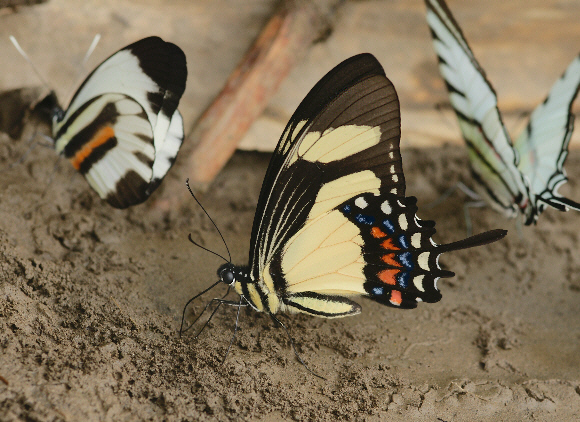
Introduction
The Papilionidae is comprised of about 600 known species. They are found throughout the world in almost every environment including deserts, mountains, grasslands, tropical rainforests, temperate woodlands, meadows, marshes and coastal dunes.
There are 3 subfamilies. The Parnassiinae consists of about 50 species. They are known as Apollos and breed mainly in mountainous areas of the northern hemisphere. The Papilioninae comprises of about 550 species distributed across the world, and includes the Swallowtails and Dragontails, and the giant Birdwings of south-east Asia. The other subfamily Baroniinae consists of a single species Baronia brevicornis which is endemic to the mountains of western Mexico.
Heraclides comprises of 28 species, and is the neotropical “sister” genus of the Holarctic Papilio, to which the European Swallowtail Papilio machaon, and the North American Black Swallowtail Papilio polyxenes belong. Some of the Heraclides species are marked with cream spots and bands, and have obvious affinities with their Holarctic counterparts. Others including anchisiades and the female of torquatus are black with pink patches on the hindwings and are Batesian mimics of Parides.
Heraclides torquatus is distributed from Mexico to northern Argentina.
Habitats
This species occurs primarily in wet lowland rainforest areas, but is strongly migratory and can thus be found in a wide variety of forested and open habitats at altitudes up to about 700m.
Lifecycle
The egg is globular and greenish-yellow in colour. It is laid singly on the leaves of Citrus bushes.
The fully grown larva is mottled in dull tones of brown, greenish-yellow and whitish, with a double row of tubercles along the back. It rests on the upper surface of leaves with its body arched, and resembles a bird dropping. Like all Papilionid larvae it possesses an extrusible forked organ called an osmaterium, situated behind the head. This is everted if the larva is molested, and gives off a noxious pheromone containing isobutyric acid which is used as a defence against ants.
The chrysalis is dark brown, marbled with green so as to resemble a piece of lichen-encrusted twig.
Adult behaviour
The butterflies are highly seasonal, the main flight period coinciding with the mid-late dry season.
Males migrate along river courses, and are commonly seen in groups of 10-20, imbibing dissolved minerals from urine-soaked sand. Lesser numbers can be seen within the forest at peccary wallows, seepages and around the edges of small lagoons, where mineral salts become concentrated as the pools dry out at the end of the dry season. In common with other Heraclides and Papilio species the adults flutter their wings constantly when mud-puddling. They are of nervous disposition, such that any disturbance causes the whole group to take immediately to flight. Females are seen much less frequently, usually when flying in light gaps within the forest.
